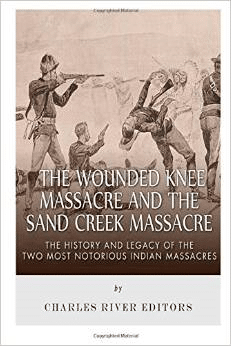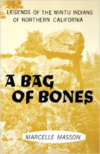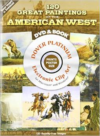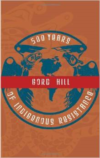Description
*Includes pictures *Includes accounts of the massacres by survivors and soldiers *Includes bibliographies for further reading *Includes a table of contents On the morning of November 29, 1864, Colonel John Chivington led 700 militiamen in a surprise attack against Cheyenne leader Black Kettle’s camp at Sand Creek. Chivington was a fire and brimstone Methodist minister who had publicly advocated indiscriminately killing Native American children because “nits makes lice.” Warning his men ahead of battle, Chivington stated, “Damn any man who sympathizes with Indians! I have come to kill Indians and believe it is right and honorable to use any means under God’s heaven to kill Indians!” According to Cheyenne oral tradition and several surviving soldiers’ accounts, as soon as Black Kettle saw Chivington’s men coming, he raised an American flag on a pole and waved it back and forth calling out that his Wutapai band was not resisting. Ignoring his cries for mercy, the soldiers commenced firing, cutting down an estimated 70-200 Cheyenne, about two-thirds of whom were women and children. The Cheyenne claimed that soldiers shot babies in the head at point-blank range, raped Cheyenne women, and scalped dead warriors. The following morning, Army Lieutenant James Connor, who had refused to follow Chivington’s orders, visited the scene of the massacre and reported, “In going over the battleground the next day I did not see a body of man, woman, or child but was scalped, and in many instances their bodies were mutilated in the most horrible manner – men, women, and children’s privates cut out . .. . I heard one man say he cut out a woman’s private parts and had them for exhibition on a stick . . . I also heard of numerous instances in which men had cut out the private parts of females and stretched them over saddle-bows and wore them over their hats while riding in the ranks.” Among all the events in the strained relations between the U.S. government and Native Americans during the 19th century, the most notorious and defining one was what is today called the Wounded Knee Massacre. Technically, it was the last armed engagement between Sioux warriors and the U.S. military, and it marked the end of effective resistance by any Sioux bands, but what actually occurred is far more controversial. In late December 1890, a group of roughly 350 Lakota Sioux led by Big Foot and Spotted Elk were escorted to the Wounded Knee Creek area and ordered to establish a camp there, but fearing another possible uprising despite the fact the band was comprised mostly of women, about 500 U.S. Army troops from the 7th Cavalry Regiment, led by Major Samuel M. Whitside, approached the Lakota encampment on the morning of December 29 with orders to disarm and escort the Native Americans to a railhead for transport to Omaha, Nebraska. Some of the men in the 7th Cavalry had also been part of the 7th Cavalry at Little Bighorn, so there could not have been a worse command to send on a mission that required interacting with the Lakota. As the troopers entered the encampment, a shot rang out. It is unclear who fired, but regardless, the single shot triggered a fusillade from the Army troops. One of the Army soldiers, Captain Edward Godfrey, explained, “I know the men did not aim deliberately and they were greatly excited. I don’t believe they saw their sights. They fired rapidly but it seemed to me only a few seconds till there was not a living thing before us; warriors, squaws, children, ponies, and dogs … went down before that unaimed fire.” The resulting assault would eventually kill most of the Native Americans, including both Big Foot and Spotted Elk. Approximately 30 U.S. Army soldiers were killed and about 40 were wounded, nearly all struck by friendly fire in the chaotic, close-quarters shooting. Of the Native American dead, most were killed outright, but the wounded were left on the frozen ground to perish during the frigid night.






Reviews
There are no reviews yet.